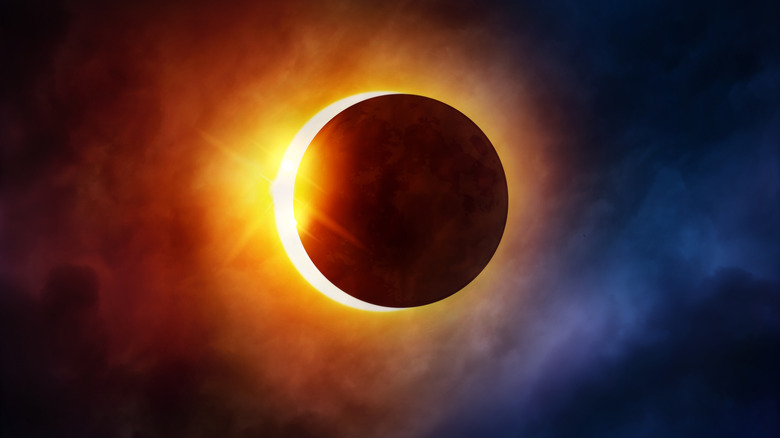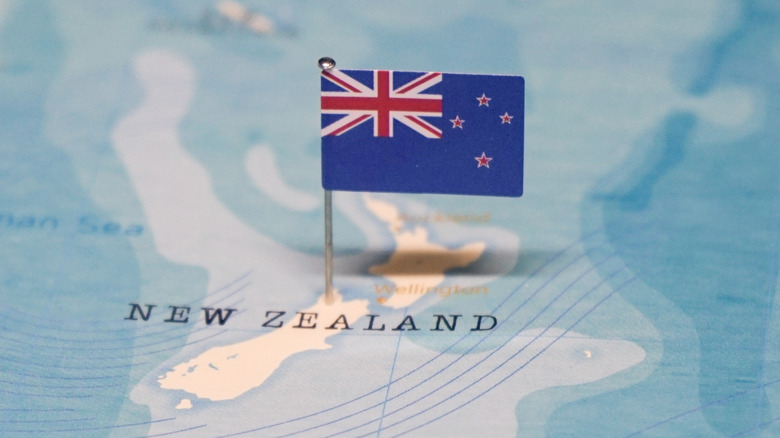Here's Where (And When) You Can See September 2025's Partial Solar Eclipse
It's always fascinating to bear witness to a celestial event like a solar eclipse, whether it's a total eclipse or a partial one. When you think about the movement of these massive, celestial objects altering the sights down here on our little Earth, it really helps to put the galaxy in perspective. Plus, it looks really cool. If you're looking to catch one of these incredible events, keep an eye on the sky from September 21 to September 22, because there will be a partial solar eclipse.
A partial solar eclipse, unlike a total solar eclipse, is when the moon's orbit passes in front of the line of sight of the sun just enough to obscure it, but not enough to completely block it out. The sky will become noticeably darker, and you'll be able to see the silhouette of the sun's corona in a spectacular view. This is also different from a lunar eclipse, which is when the Earth passes between the sun and moon. As an eclipse is generated via the relative positions of the sun and moon versus the Earth, your precise positioning on the Earth will determine how much of the eclipse you can actually see. In this particular case, the September 2025 partial solar eclipse will be most visible to those living in the southern hemisphere.
The eclipse will be most visible in the southern hemisphere from September 21-22
The September 2025 partial solar eclipse will be at least partially visible to around 0.20% of the global population. Unfortunately, for many individuals, only a small sliver of the effect will be visible. For those hoping to get the fullest possible view of the eclipse, you should book a trip to a country in the southern hemisphere, particularly either Australia or New Zealand. Both countries will experience the maximum eclipse effect starting at around 5:40 AM local time on September 22. The New Zealand city of Invercargill will have one of the best views of the event.
As a reminder, you should never look directly at the sun during a solar eclipse with your naked eyes, as the powerful light and heat could permanently damage your eyes. If you're planning on viewing the eclipse, you'll want to purchase a pair of authentic eclipse viewing glasses, or craft a homemade eclipse viewing device from a cereal box or shoebox. Do not attempt to view the eclipse with a regular pair of sunglasses, as sunglasses lenses are not sufficient to protect your eyes. Be wary of cheap, knock-off eclipse viewing glasses as well, as unscrupulous individuals may sell viewers with simple tinted lenses that won't actually protect you.

